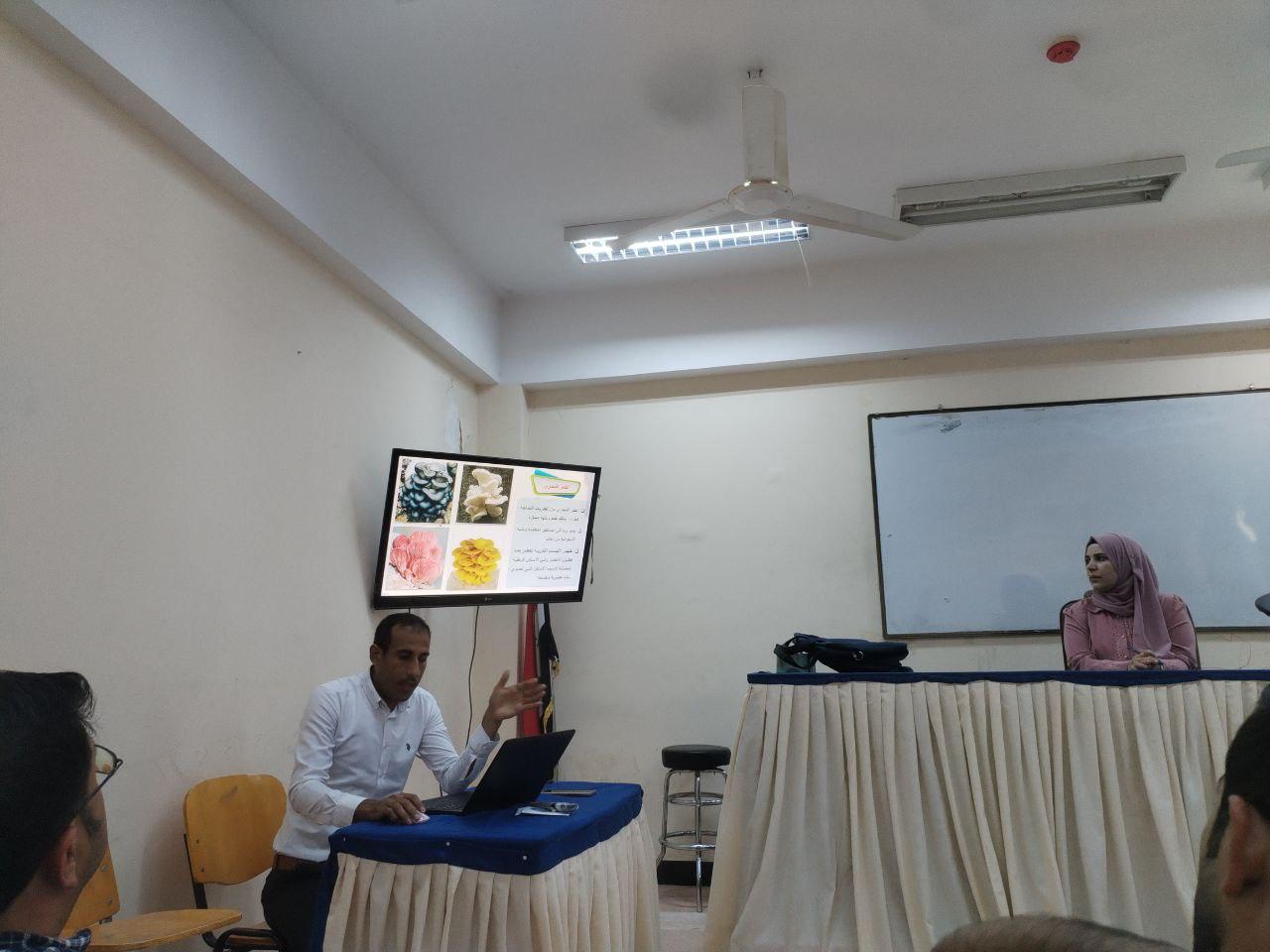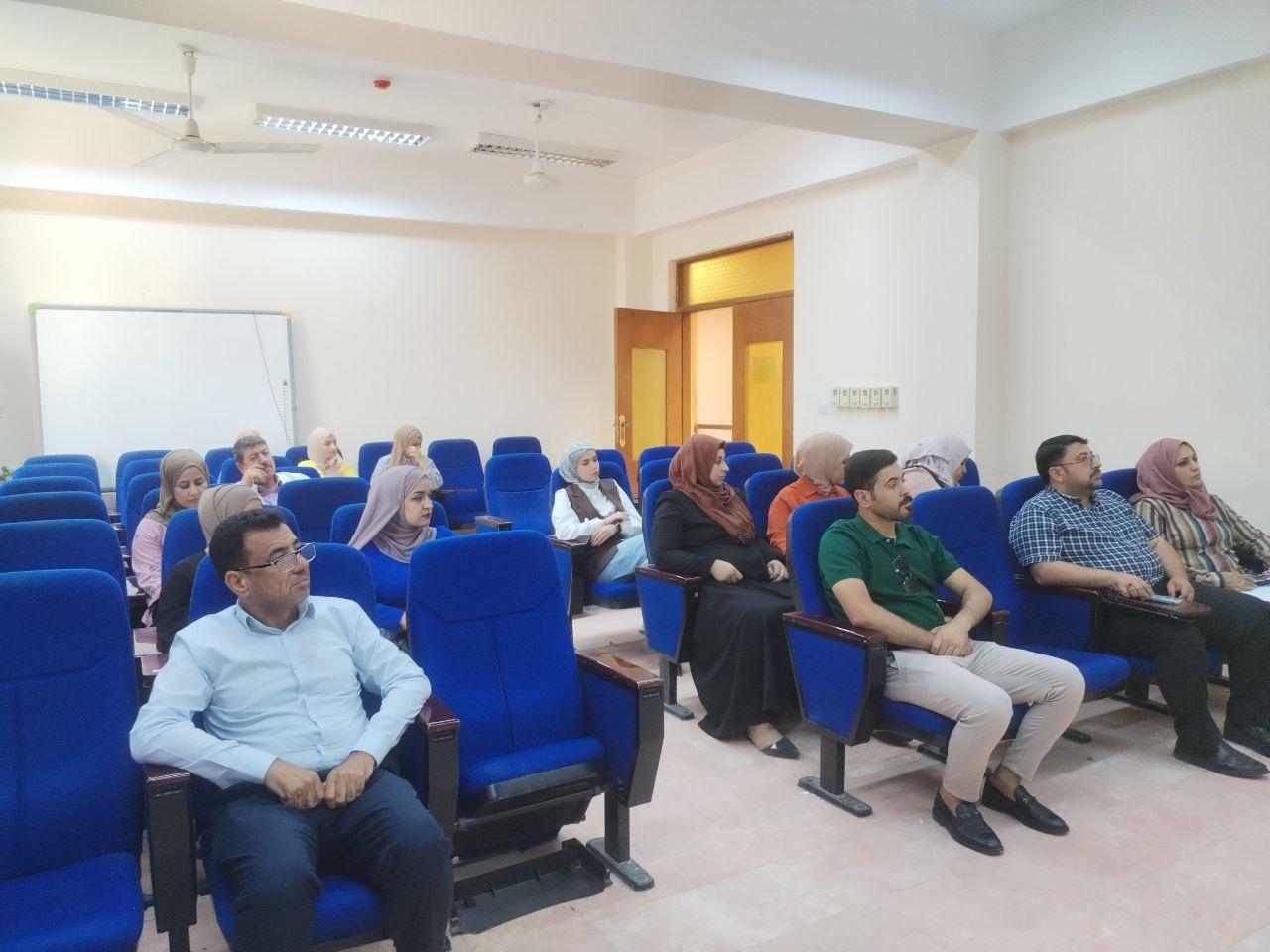A workshop at the College of Agriculture on the production of edible oyster mushrooms using agricultural and industrial waste at home.

The Department of Horticulture and Landscape Engineering at the College of Agriculture, University of Diyala, in collaboration with the Division of Rehabilitation, Employment, and Follow-up at the College of Agriculture, University of Diyala, organized a workshop for fourth-year students and graduates titled “Production of Edible Oyster Mushrooms Using Agricultural and Industrial Waste at Home.”
The workshop, presented by Assistant Professor Dr. Khalid Ibrahim Mustaf and Assistant Lecturer Ramoosh Haqi Ismail, included a historical introduction to oyster mushrooms and the development of their cultivation. It covered the optimal conditions for production and the unique advantages of oyster mushrooms compared to other edible fungi. These advantages include simple production techniques, low cost, rapid growth, high biological efficiency, and ease of substrate preparation without the need for decomposed medium or the addition of lime or covering materials. Additionally, the primary buds of the fruiting bodies of the studied white strain form without the need for a cold shock. Oyster mushrooms are also distinguished by their excellent taste, acceptable aroma, and the ability to be preserved in various ways.
The lecturers also discussed the nutritional importance of oyster mushrooms, highlighting their high nutritional value due to their content of balanced dietary components such as minerals and water-soluble vitamins like B1, B2, B5, B6, B7, B12, and C. The protein content ranges from 20 to 40% on a dry weight basis, with low fat content and numerous medical benefits.
The stages of oyster mushroom production involve collecting plant and factory waste, sawdust, etc., drying, chopping, sterilizing, and inoculating them with mushroom seeds. The bags are then sealed tightly and transferred to the incubation room. After the fungal mycelium has fully grown on the bags, they are moved to the production room, where the appropriate temperature, humidity, and ventilation are maintained. The fruiting bodies start to appear, and then they are harvested and marketed.








